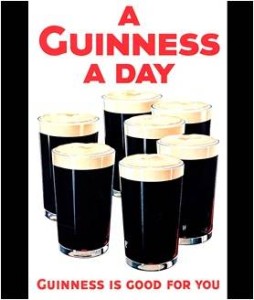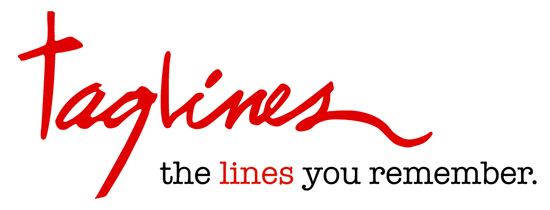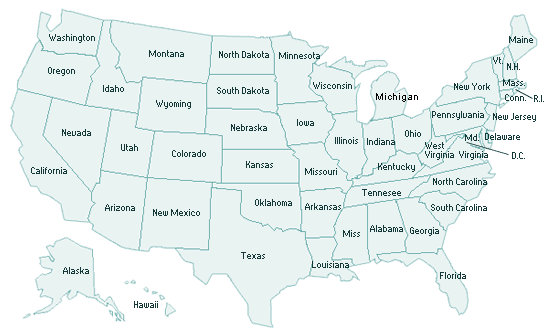Is Your Brand Prepared to Capitalize on Recent Growth?
Is Your Brand Prepared to Capitalize on Recent Growth?
By Matthew Harris
Congratulations! For your company, 2014 was a banner year. From revenue and profits to number of employees and offerings, growth was the theme. The company is set up for continued success in 2015 and beyond… if you can continue making the right choices, specifically when it comes to your brand.
For companies that are coming off of a year in which they experienced their first true taste of success, the following year’s brand strategy actions and decisions can go a long way to determining how far the company can capitalize and continue to grow. One factor in this is understanding the power of your brand.
This growth has almost certainly increased your brand awareness and impacted your brand positioning. A company on the rise is likely to pique a heightened interest among its target audience compared to a company that has seen a growth plateau. Now, the challenge is to continue to increase your brand awareness and evolve your brand positioning with the goal of building a brand while not forgetting what got it to this point.
 Long-lasting, successful brands are built on a foundation of meaningful brand strategy, one that provides a strong framework for what the brand is and what it represents. A successful brand strategy serves as a roadmap for where a brand should go in the future, and how to take it there, without wasting time or money going down the wrong path.
Long-lasting, successful brands are built on a foundation of meaningful brand strategy, one that provides a strong framework for what the brand is and what it represents. A successful brand strategy serves as a roadmap for where a brand should go in the future, and how to take it there, without wasting time or money going down the wrong path.
Additionally, strong brands know the benefit of not only focusing on externally-facing touch points, but also putting in the time and resources necessary to build brand awareness and strengthen the brand with internal audiences. For an employee of a growing company, the feeling of ownership and pride for the brand is a valuable asset to have for motivation and self-satisfaction in their role within the company.
Because your company has experienced success, there is a good chance that your brand is in a strong place and has some of the tools in place that can continue its success, so a complete brand strategy overhaul is likely unnecessary. However, the market is constantly evolving, and the risk of complacency for a growing company can quickly halt any momentum gained in the past. A company’s brand positioning needs to evolve as it does, following the growth from where the brand is today to where it wants to be tomorrow.
Before you begin to create your brand strategy, you should take stock of where you are. You will have many questions regarding your business on a number of important topics, including whether you are communicating the right thing to your target audiences, what brands in your portfolio hold the most potential for continued growth, and whether a rebrand would be a successful step to take. When faced with organizing and recognizing where you are as a brand, it is a good idea to bring in a third party to handle the research and analysis, who can provide objective results that cannot be reached when the work is done internally.
There are a few areas where many growing companies can find benefit in setting a strategy of evolution, including product and service lines, social media strategies, and how you position your company to your consumers. The main focus should be on ensuring that your brand can adapt and excel in an ever-changing business environment, without compromising your core characteristics.
Set yourself up for future growth – plan and strategize with the mindset that your past success was just the beginning and soon, your brand equity will carry enough weight to begin driving a portion of your business.
Follow us on Twitter @AddisonWhitney or join the conversation on Facebook and Google+
An app by any other name is the same
According to The American Marketing Association (AMA), a brand is defined as a "name, term, sign, symbol or design, or a combination of them intended to identify the goods and services of one seller or group of sellers and to differentiate them from those of other sellers." Key word here = differentiation.
My job entails creating new identities for companies ... products, services, new corporations. In doing so I strive to create a moniker that stands out from the competition; a name that effectively positions the offering in a way that offers distinction and memorability.
So why is it that iPhone apps don't appear to operate under the same guidelines? I was searching for a calorie counter app the other day - type in anything related to calories, exercise or fitness and you are inundated with apps that promise to trim your waistline and increase your cardio stamina. Problem is, aside from the price and the star-based feedback, how do you tell them apart? At first glance alone, how do you differentiate?
Here are the results of my app search for 'calorie': Read more
My Goodness

......................................................................................................................................................................
For 250 years, Guinness has been refreshing thirsty beer-lovers across the world. And, on St. Patrick’s Day, no celebration is complete without this Irish legend.
To many, Guinness is so much more than a beer, it’s an experience of pure joy. Envision the Guinness experience: the request, “Guinness please;” the 119.53 second pour; the cascade; the first sip.
What was developed from humble beginnings has become one of the world’s most successful brands. Its advertising from the 1930s is considered art. Fanatics make pilgrimages to Guinness Storehouse for a pint. Its logo can be found on anything from shirts to hats to toy trucks to cufflinks. In Africa, its ads transitioned into a movie called "Critical Assignment" starring a character of its own creation called Michael Power. And, in 2007 it was estimated that 10 million glasses of Guinness were enjoyed around the world each day.
So, this St. Patty’s Day, as you enjoy a Guinness or two (if you're of legal age of course), take some time to savor a little bit of the history in your glass. Sláinte!
"May you live as long as you want and never want as long as you live." - Irish toast
The Power of a Brand Name

Image from www.taglines.org
......................................................................................................................................................................
What makes a great tagline? Is it longevity; has it endured the test of time? What about influence; has it exercised influence on our culture, media, and language? Or maybe is it originality; has it set new trends or broken through barriers in the advertising industry?
Most likely, it’s a combination of all the above. However, the ten great taglines below follow a different criterion: they each include the company’s name somewhere within the tagline. Take a look at the list below; I’m sure you’ll recognize the power of the brand name.
| You’re in good hands with Allstate. (1956) | Allstate Insurance |
| There are some things that money can’t buy. For everything else there’s MasterCard. (1997) | MasterCard |
| Please don’t squeeze the Charmin. (1964) | Charmin |
| Come alive! You’re in the Pepsi generation. (1964) | Pepsi |
| Have a coke and smile. (1979) | Coca-Cola |
| With a name like Smucker’s, it has to be good. (1962) | Smucker’s |
| Nothing comes between me and my Calvins. (1979) | Calvin Klein Jeans |
| Yo quiero Taco Bell. (mid-1990s) | Taco Bell |
| The few, the proud, the Marines. (1991) | U.S. Marines |
| Don’t get mad. Get GLAD. (early 1980s) | Glad |
By Kelley Blakewood
Brand Your Bugs
As consumers are looking for more natural solutions to implement within their lives and specifically within their healthcare choices, probiotics are emerging as a hot new trend. Probiotics (translated as "for life") refers to the "good" bacteria that are included in dietary supplements or food products.
This "good" bacteria found in our adult bodies has been shown to assist with digestion, produce vitamins, regulate the immune system, and help the body stave off the "bad" bacteria. The dominant population consists of strict anaerobic bacteria: Bacteroides, Bifidobacterium, Eubacterium and Peptostreptoccocus.
Consumer companies are getting into the bug business by branding and marketing specific strains of this good bacteria as an ingredient brand in their yogurts, juices and supplements.
Take a look at some current offerings:
- Align has a new presence in the media by touting its "Bifantis," which is a neologism that truncates the scientific name of the bacteria: Bifidobacterium infantis 35624.
- Activia has been on the market for several years and recently utilized Jamie Lee Curtis as the "Activia Lady." Their primary ingredient is "Bifidus Regularis" from the Bifidobacterium animalis DN-173 010 strain.
- NakedJuice bypasses the direct reference to bacteria altogether and uses simply "Probiotics" on this product within their lineup. It's interesting that they refer to probiotics as the "friendly, live active cultures."
- Attune Foods offers two probiotics bars, and takes it a step further by reinforcing the idea of a daily nutritional value with "daily probiotics."
- Bio-K+ utilizes a strictly scientific approach, through both their core brand name and the product names. CL1285, available in capsule, fermented milk, and dairy free forms, is a bacterial probiotic culture containing the unique and patented formula of L. acidophilus and L. casei.
- Finally, check out GoodBelly Yogurt & Juice. These products use the mark "Lp299v," which refers to Lactobacillus plantarum 299v. No emotional benefits present in this ingredient name; the company uses their core brand to communicate the end result of the product.
What do you think? Does branding bacteria with an emotional name versus a scientific one make you more inclined to try a probiotic product?
U.S. City Nicknaming

......................................................................................................................................................................
Here at Addison Whitney, we know branding. We know how important it is to have a brand name that reinforces your overall strategic plan. The following are a list of "nicknames" that some U.S. cities have been given or have adopted themselves. How successful are these nicknames at making the connection to the city they are referencing? These nicknames were found on the official Wikipedia site for city nicknames in the United States.
How many U.S. cities can you match with the following nicknames. (Try and pick the cities before looking at the list of choices!)
Hanging Basket Capital of the World
The First Town in the First State
The City of Five Flags
The Classic City
Turf Grass Capital of the World
Ice Cream Capital of the World
Bourbon Capital of the World
Horse Capital of the World
The Birthplace of Jazz
Crab Cake Capital of the World
The Mini Apple
Firefly Capital of the World
The Queen City
Furniture Capital of the World
The Sweetest Place on Earth
Emerald City
The Magic City of the Plains
See below for list of U.S. City choices
Read more
Branding on a Budget

......................................................................................................................................................................
With the economy slowing, many consumer brands are feeling the pressure to keep customers spending, which means better deals for us! Listed below are just a few brands that are attempting to leverage the recent economic crisis.
TARGET:
Target’s new TV ad campaign focuses on a more cost friendly approach to everyday life. The do-it-yourself spirit of the ad empowers customers to think about their everyday life differently. For example, riding a bike to work rather than worrying about expensive gas, cutting your children’s hair rather than taking them to the barbershop every 3 weeks and exercising at home rather than paying a costly gym membership. The ads encourage me to think about the necessities in my life and how I can find ways to simplify and reduce my spending.
Read more
Branding a National Pastime

......................................................................................................................................................................
You’d think that after spending 40+ hours a week emerged in other companies’ corporate and product branding initiatives, a person would choose to escape and relax on the weekends. But for 3-4 months a year, my weekend activities incorporate my day job, because I represent a branded tailgate party.
A group of Wake Forest alumni who realized we no longer fit in with the student lot crowd at football games, but who weren’t qualified for parking passes in the lot closest to the stadium with the big donors (the Gold Lot), set up camp in the corner of the Blue Lot that almost touches the Gold Lot. Thus, Almost Gold was born.
